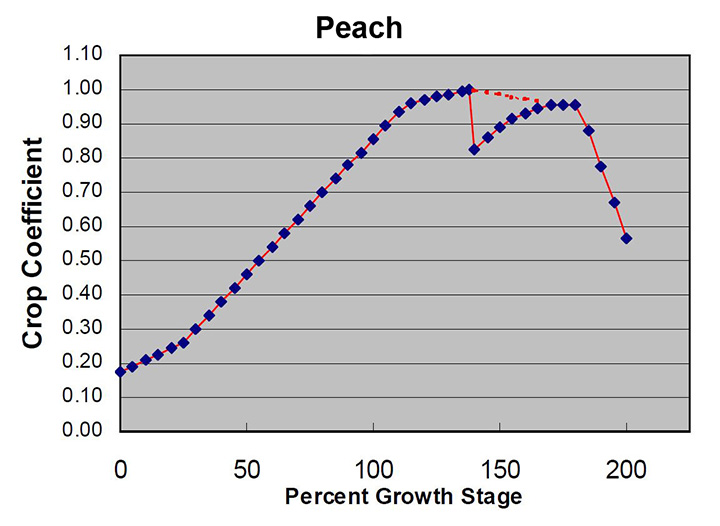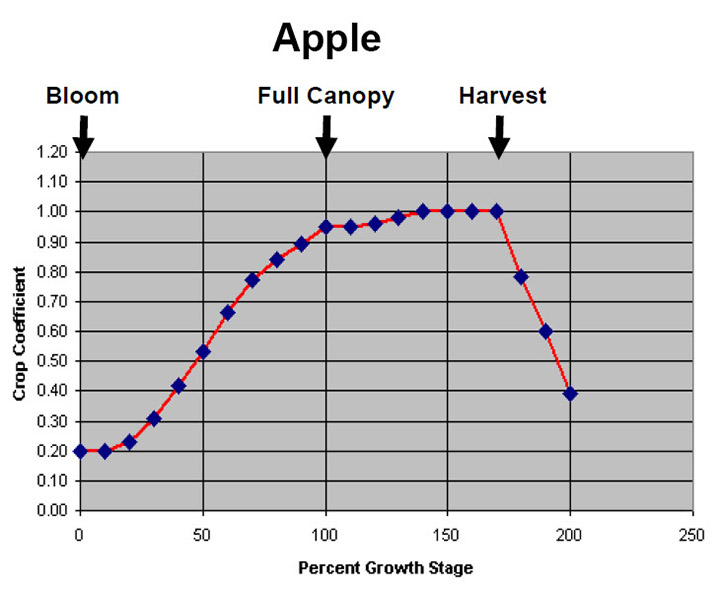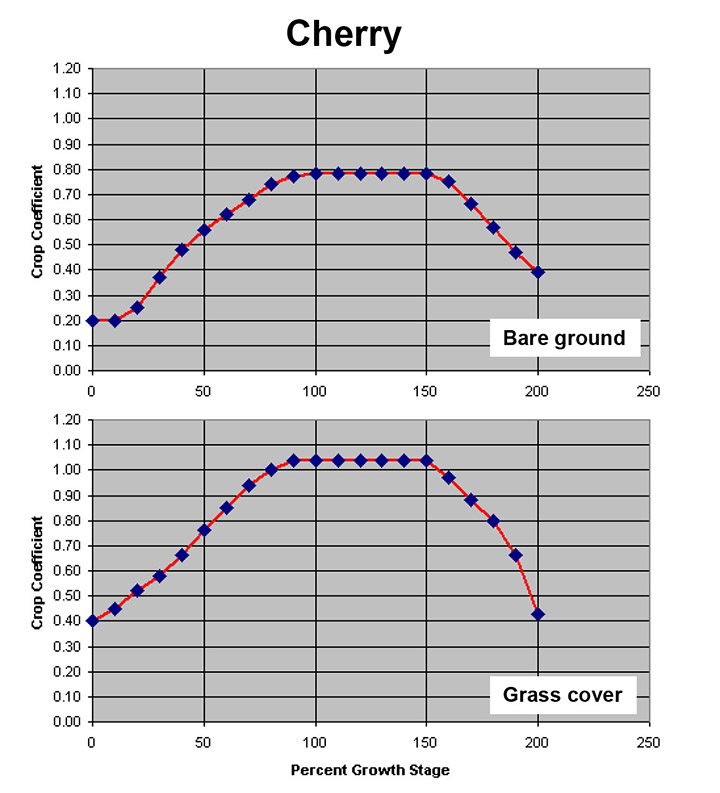Orchard Irrigation: Evapotranspiration
Water is lost from the orchard through surface runoff, deep percolation (moving below the root zone), evaporation from the soil surface, and transpiration through the leaves of the plant. Of these, the biggest losses are typically due to evaporation and transpiration, collectively known as “evapotranspiration” or ET. Deep percolation from excess irrigation can be another large loss, but is easily avoided by using available irrigation monitoring tools. Estimates of ET are based on weather data, including air temperature, sunshine, relative humidity and wind speed. Some weather stations are programmed to calculate and report the ET estimates for alfalfa as a reference crop (ETref or ETr).
Typical weekly ETr values are shown below. Calculated ETr can be determined by accessing weather data from a nearby weather station for each of these areas:
Typical weekly alfalfa reference evapotranspiration (ETr) values for locations in Utah.
| Location | May | June | July | August |
|---|---|---|---|---|
| Logan | 1.38 | 1.83 | 1.94 | 1.68 |
| Ogden | 1.48 | 1.98 | 2.10 | 1.80 |
| Spanish Fork | 1.48 | 1.94 | 2.08 | 1.74 |
| Santaquin | 1.47 | 1.92 | 2.03 | 1.67 |
| Moab | 1.63 | 2.08 | 2.19 | 1.87 |
| Cedar City | 1.57 | 1.95 | 2.04 | 1.74 |
| St. George | 1.95 | 2.40 | 2.53 | 2.02 |
Crop coefficients for peach, apple, and sweet cherry based on alfalfa reference ET.



The ET of your crop can be determined by multiplying the ETr by a correction factor or crop coefficient (Kcrop) that is specific to your crop and its stage of development . In general, as the trees leaf out and increase the numbers of leaves in the canopy (where most water is lost by transpiration), the crop coefficient goes up.
ETcrop = ETr × Kcrop
The Kcrop for peach is shown to the right. At full bloom (Growth Stage = 0), a peach orchard is using about 20% of the amount of water used by the alfalfa reference crop. Water use increases gradually as the canopy develops until the full canopy is established (growth stage = 110) when water use is 95% of a reference alfalfa crop. Water use increases slightly during fruit ripening, then drops below 90% after fruit harvest (growth stage = 140). Water use increases again during the late season then declines during leaf senescence.
The Kcrop for apples is shown to the right. At full bloom (Growth Stage = 0), an apple orchard is using about 20% of the amount of water used by the alfalfa reference crop. Water use increases dramatically until the full canopy is established (growth stage = 100) when water use is 95% of a reference alfalfa crop. Water use increases slightly during the second phase of fruit growth (mid-season to harvest) when water use is at 100% of the reference alfalfa crop. After harvest (growth stage = 170), water use quickly decreases.
The Kcrop for sweet cherry is shown to the right and differs depending on whether or not the alleys have grass or are clean cultivated. At bud break (Growth Stage = 0), a cherry orchard with grass between rows is using about 40% of the amount of water used by the alfalfa reference crop, compared to 20% under clean cultivation. Water use increases until full bloom and fruit set (growth stage = 100) when water use is 105% of a reference alfalfa crop with grass cover and 80% without. By leaf senescence in the fall (growth stage = 200), water use has decreased to 40% of the reference crop.

